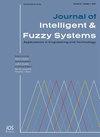A novel three-value grid scheme and rescue path planning algorithm for building fire
IF 1
4区 计算机科学
Q3 COMPUTER SCIENCE, ARTIFICIAL INTELLIGENCE
引用次数: 0
Abstract
The 0-1 grid method is commonly used to divide a fire building into fully passable and fully impassable areas. Firefighters are only able to perform rescue tasks in the fully passable areas. However, in an actual building fire environment, there are three types of areas: fully impassable areas (areas blocked by obstacles or with heavy smoke and fire), fully passable areas, and partially passable areas (areas without obstacles or fire, but with some smoke risk). Due to the urgency of rescue, firefighters can consider conducting rescue tasks in both fully passable and partially passable areas to save valuable rescue time. To address this issue, we propose a three-value grid method, which classifies the fire environment into fully impassable areas, fully passable areas, and partially passable areas, represented by 1, 0, and 0.5, respectively. Considering that the ACO algorithm is prone to local optimum, we propose an enhanced ant colony algorithm (EACO) to solve the fire rescue path planning problem. The EACO introduces an adaptive heuristic function, a new pheromone increment strategy, and a pheromone segmentation rule to predict the shortest rescue path in the fire environment. Moreover, the EACO takes into account both the path length and the risk to balance rescue effectiveness and safety. Experiments show that the EACO obtains the shortest rescue path, which demonstrates its strong path planning capability. The three-value grid method and the path planning algorithm take reasonable application requirements into account.建筑火灾三值网格方案及救援路径规划算法
一般采用0-1网格法将火灾建筑划分为完全通行区和完全不可通行区。消防队员只能在完全可以通过的区域执行救援任务。然而,在实际的建筑火灾环境中,有三种类型的区域:完全不可通行区域(被障碍物阻挡或有浓烟和火灾的区域),完全可通行区域和部分可通行区域(没有障碍物或火灾,但有一定烟雾风险的区域)。由于救援的迫切性,消防员可以考虑在完全可通区域和部分可通区域进行救援,以节省宝贵的救援时间。为了解决这一问题,我们提出了一种三值网格方法,将火灾环境分为完全不可通过区域、完全可通过区域和部分可通过区域,分别用1、0和0.5表示。针对蚁群算法容易出现局部最优的问题,提出了一种改进的蚁群算法(EACO)来解决火灾救援路径规划问题。该算法引入自适应启发式函数、新的信息素增量策略和信息素分割规则来预测火灾环境下的最短救援路径。此外,EACO同时考虑路径长度和风险,以平衡救援的有效性和安全性。实验表明,该算法得到了最短的救援路径,证明了其较强的路径规划能力。三值网格法和路径规划算法兼顾了合理的应用需求。
本文章由计算机程序翻译,如有差异,请以英文原文为准。
求助全文
约1分钟内获得全文
求助全文
来源期刊

Journal of Intelligent & Fuzzy Systems
工程技术-计算机:人工智能
CiteScore
3.40
自引率
10.00%
发文量
965
审稿时长
5.1 months
期刊介绍:
The purpose of the Journal of Intelligent & Fuzzy Systems: Applications in Engineering and Technology is to foster advancements of knowledge and help disseminate results concerning recent applications and case studies in the areas of fuzzy logic, intelligent systems, and web-based applications among working professionals and professionals in education and research, covering a broad cross-section of technical disciplines.
 求助内容:
求助内容: 应助结果提醒方式:
应助结果提醒方式:


